甲骨文 – Oracle Bone Script


Shang Dynasty Inscribed Ox Scapula, Oracle bone from the reign of King Wu Ding (late Shang dynasty), c. 1200 B.C. Image from here.
and Restored Tortoise Shell with Oracle Bone Script Incisions, mid Shang Dynasty, 1600-1046 B.C. Image from here.
Oracle Bone script is a form of early Chinese written characters incised onto animal bones or turtle shells. This practice of carving the script into animal bones was used in pyromaniac divination – ritual practices by fire. The earliest inscriptions date back to the Shang Dynasty, in the 15th-16th century B.C.
I was extremely drawn to this script and practice during the lecture as it incorporates the use of text for religious or superstitious practices. Also, I found it pretty metal that the inscriptions were done on animal parts.
Upon further research, I found the story of the rather serendipitous discovery of this script and practice and the accidental uncovering of an ancient tradition was intriguing and amusing to me.
The Oracle Bone script was discovered by an official from Beijing in 1899 when he visited a traditional Chinese medicine doctor and was prescribed “Dragon Bone” or “龍骨”. This turned out to be a piece of bone covered in ancient carvings that resembled Chinese characters. Fascinated, he eventually located a village in the Henan Province where a significant amount of artefacts were recovered.
“Oracle bone script is stunningly beautiful in its raw simplicity. It is secluded deep under a veil of primordial aura, untouchable and proud, yet elegantly brilliant. Due to the primitive tools used for inscribing the script (knives as carving tools, and low quality brushes made of rather “dull” and non-responsive hairs), the lines forming the characters resemble compositions made of wooden splinters. Strokes are canoe shaped, narrowing gradually to the sharp endings. Even curved lines are made of a series of straight cuts.”
– Text from here.
It’s interesting to see how this ancient script remains relevant in the current times as many artists/calligraphers strive to replicate the texts via various mediums. Below I’ve linked a video of an artist executing studies on the Oracle Bone script.
Apart from studying a replicating the script, I also found a rather peculiar design endeavour by the doctoral supervisor at the Department of Visual Communication Design at Tsinghua University in Beijing.
Drawing inspiration from the Oracle Bone script, creator Chen Nan created a set of “emojis” to illustrate online buzzwords and internet slang. Dubbed “The Oracle Has Expressions” and “Chinese Zodiac Oracle”, the designs combine the pictographic Oracle Bone script with vibrant colour schemes and quirky animation styles.
 Some oracle bone characters designed in geometrical patterns.Image from here.
Some oracle bone characters designed in geometrical patterns.Image from here.
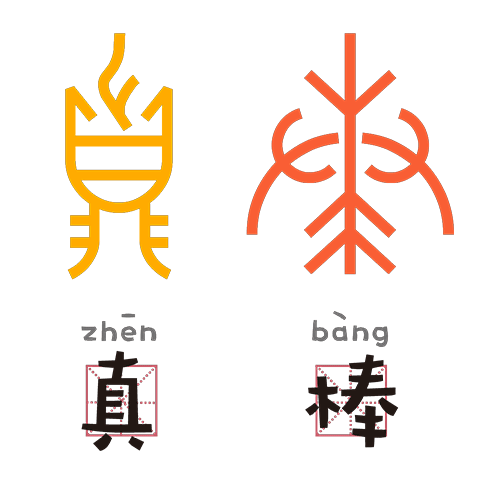
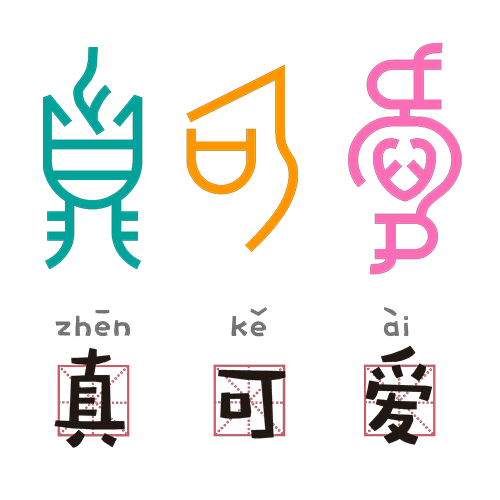
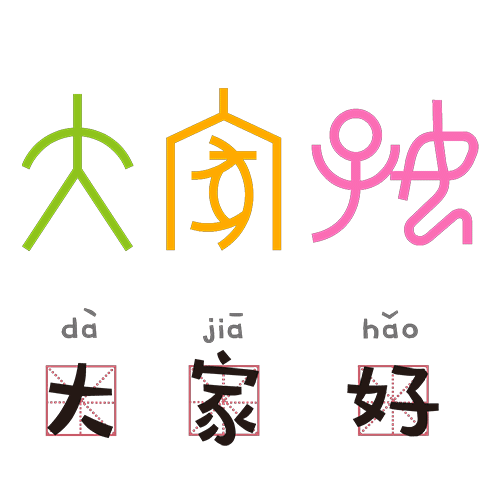
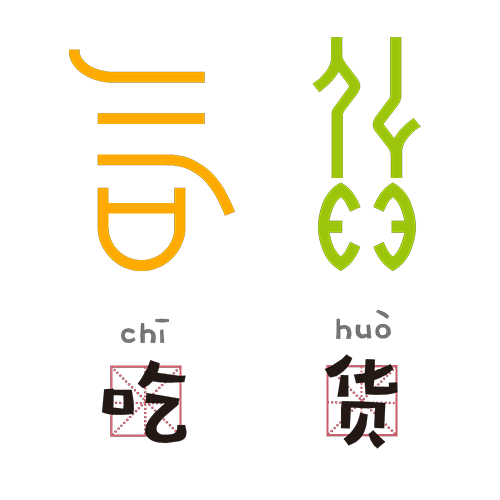
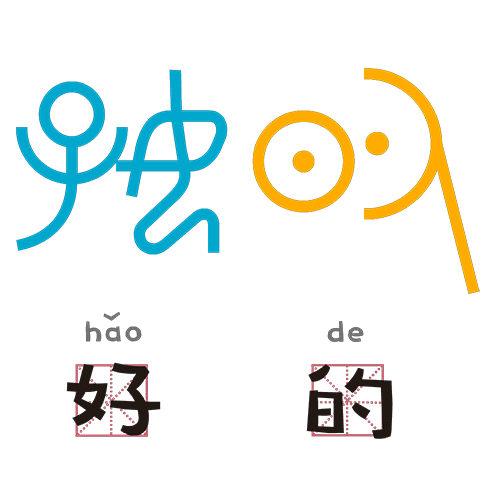

From left to right, top to bottom, the words mean “very good”, “very cute”, “hi everyone”, “foodie”, “ok” and “kiss”. Gifs from here.
Having gone viral, Chen Nan’s Oracle Bone script emojis have stirred up much debate on its appropriation/appreciation of the ancient practice. However, he asserts that his creation was made with the intention of connecting Chinese people with this cultural tradition.
Here are some quotes I pulled by Chen Nan himself:
“Besides their historical value, the pictographic characters allow us to connect with our ancestors. We can feel their wisdom and humor (through the characters)”
–from here.
“At present, most people think Jiaguwen is hard to understand and ignore the great historic value of it. Through using Jiaguwen memes, I truly hope that more people can develop the interest of the ancient characters and make it accessible to more people’s daily life”
–from here.
As Chen Nan has engaged in a 20-year pursuit of the study of the Oracle Bone art, it is likely that his extreme appreciation for this traditional form drove him to create this culturally-engaging meme-fication of the practice to attract more internet savvy youths and generate interest in this obscure practice.
In this pursuit, it is evident that his work satisfied his goal of generating a fresh appreciation for the ancient relics.
Here are some quotes from various internet users:
“They’re the most highbrow emojis I know of, as they have profound cultural connotations”
–from here.
“I never imagined that I can use Jiaguwen to communicate with my friends. I thought they can only be seen in my textbooks and understood by a few researchers. Also, these memes look so creative and cute”
–from here.

The drawing template of oracle bone script used to make latte art. Image from here.
All in all, I really enjoyed learning about this traditional practice and seeing how it persists even in today’s internet culture. (The above image to me is also the most millennial interpretation of the Oracle Bone script, combining internet memes with instagrammable latte art. LOL.)
木活字 – Wooden Type/Woodblock Printing
The Pen ts’ao, Li Shizhen, 1249 C.E. Printed with woodblock, this illustrated book discusses Chinese herbal medicine. Image from here.
Aside from the Oracle Bone script, I did also take interest in the Chinese Woodblock printing technique mentioned in the lecture. However, this post is probably too long and I’ll just link a very nicely made video of Chinese YouTube Li Ziqi going through the various steps of creating a woodblock print.

Lots of cool information here. It seems like we are regressing back to pictographic communications after all. Fun gifs tho!
Hi Desmond!
Yes I was wondering how much could we rely on emojis and gifs nowadays to communicate aside from plain texts given our so called “regression” back to pictographic communications 😛